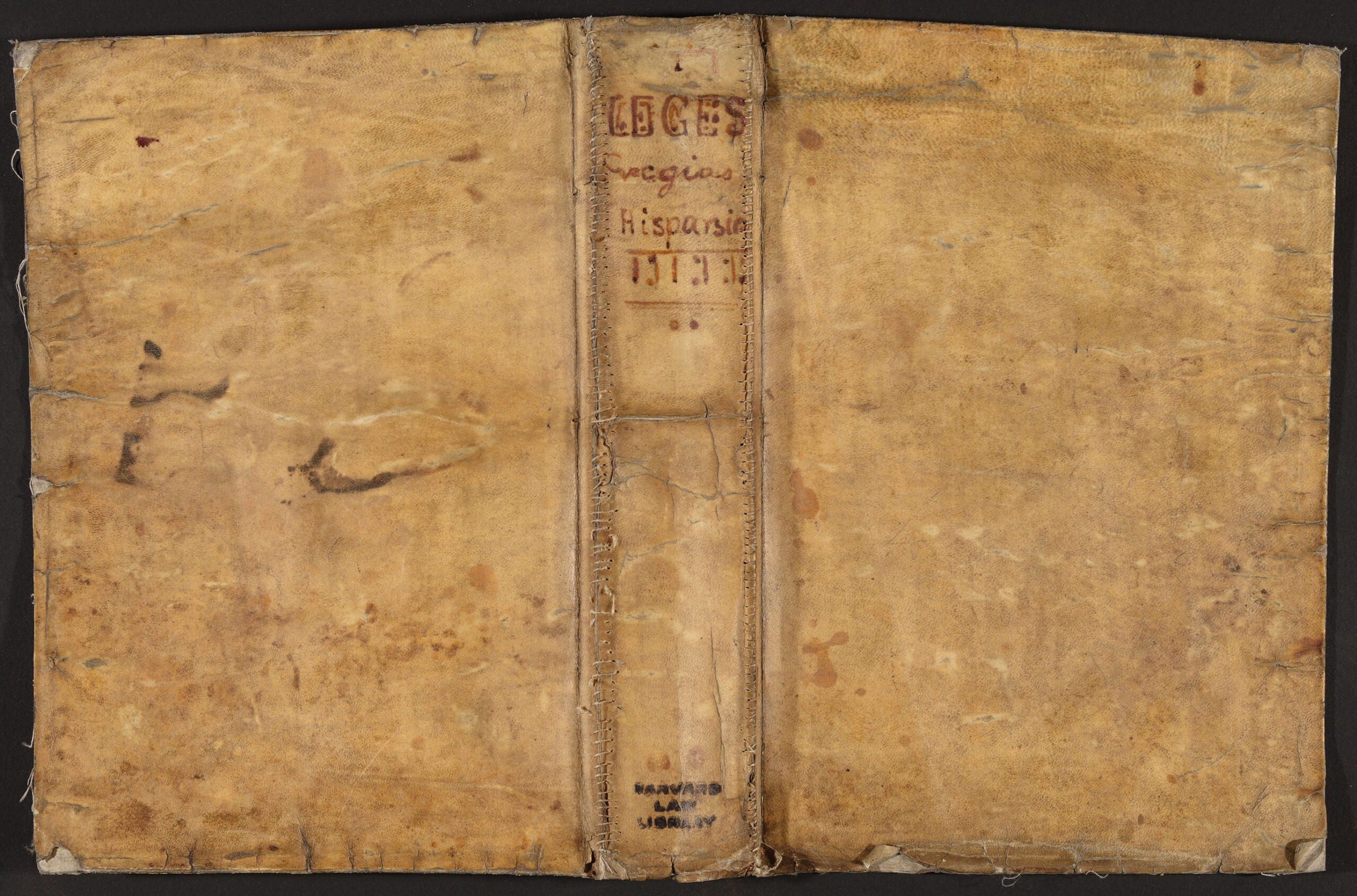Stories from the Vault Series
This series highlights popular posts from the now-retired Harvard Law School Library blog, Et Seq. When Et Seq. debuted on February 1, 2007, it was the Library’s first foray into public blogging. Upon its retirement on February 28, 2024, the blog included more than 1,000 posts covering topics such as Harvard Law School history, research tips and guides, collection highlights, and Library-sponsored events
Old Books, New Technologies, and “The Human Skin Book” at HLS
In this 2014 post on our now-retired blog Et Seq., former manager of Historical & Special Collections KB Beck put to rest a long-standing question about the binding of an early 17th century Spanish legal text.
View the archived web page of the original post, which is part of the Harvard University Archive’s A-Sites: Archived Harvard Websites collection, or read below…
April 3, 2014
By KB Beck
Baaaaaad news for fans of anthropodermic bibliopegy: Recent analyses of a book owned by the HLS Library, long believed but never proven to have been bound in human skin, have conclusively established that the book was bound in sheepskin.
The final page of the book includes an inscription which states,
“The bynding of this booke is all that remains of my dear friende Jonas Wright, who was flayed alive by the Wavuma on the Fourth Day of August, 1632. King Mbesa did give me the book, it being one of poore Jonas chiefe possessions, together with ample of his skin to bynd it. Requiescat in pace.”

At the request of HLS Library curators and Weissman Preservation Center staff, Daniel Kirby, a conservation scientist at the Harvard University Art Museums’ Straus Center, analyzed the parchment binding of Juan Gutiérrez’ Practicarum quaestionum circa leges regias Hispaniae (Madrid, 1605-1606; HOLLIS no. 990043175530203941). Kirby used a method called peptide mass fingerprinting to analyze nine samples of the front and back covers, binding, and glue. With peptide mass fingerprinting, the samples could readily be differentiated from other parchment sources including cattle, deer, and goat, as well as human skin. The glue was identified as a mixture of cattle and pig collagen.

If Jonas Wright was indeed a sheep, why would someone have written such an inscription? We’ll probably never know. Perhaps before it arrived at HLS in 1946, the book was bound in a different binding at some point in its history. Or perhaps the inscription was simply the product of someone’s macabre imagination.
In any event, we are indebted to Daniel Kirby’s analysis and are glad the question is finally settled. Score one for modern science! The volume (including the sheepskin binding) has been digitized.
Filed in: Et Seq
Contact Us
phone: 617-495-3455
email: asklib@law.harvard.edu
library website: hls.harvard.edu/library
Stay Connected
Library Innovation Lab (LIL) Blog
Instagram @hlslibrary
Facebook @hlslibrary
Et Seq blog (archived)
